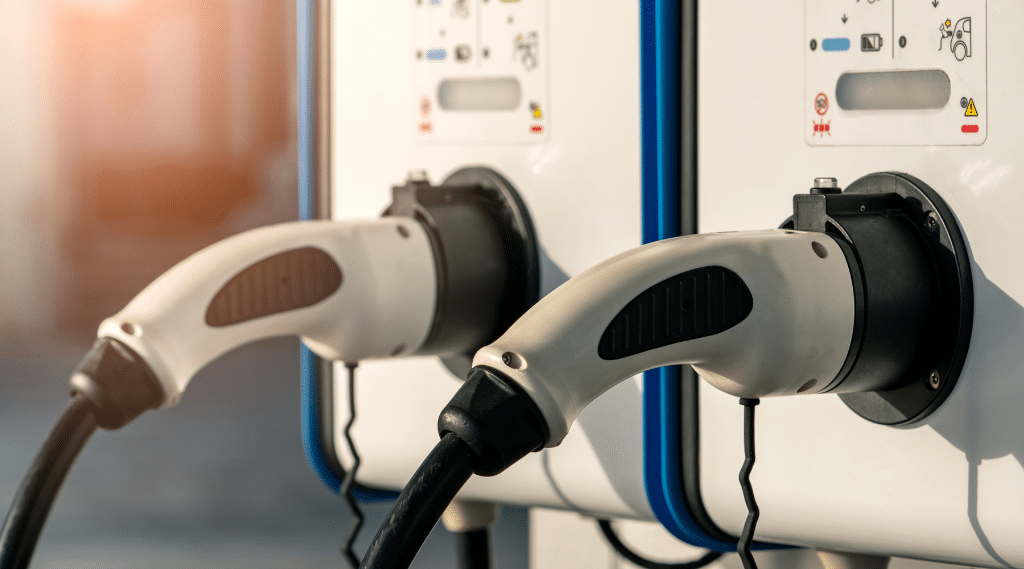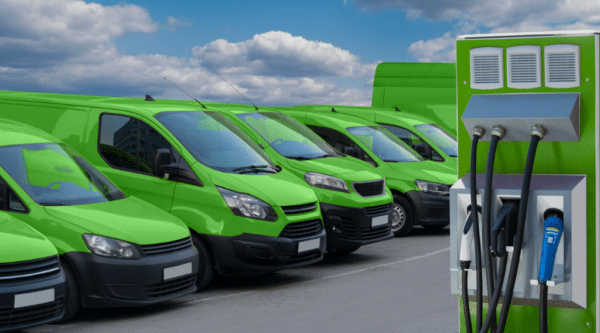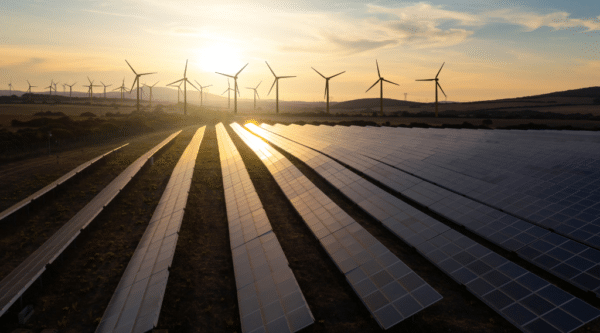What are Clean Fuel Standards?
The journey of Clean Fuel Standards began in 2006 with California’s groundbreaking AB 32, the Global Warming Solutions Act. This set the stage for the adoption of the first Clean Fuel Standard Programs along the West Coast. California introduced its Low Carbon Fuel Standard (LCFS) in 2011, followed by Oregon with its Clean Fuels Program (CFP) in 2016, and Washington State with its Clean Fuel Standard (CFS) in 2023. Other states are currently considering similar legislation.
In 2008, British Columbia launched its Low Carbon Fuel Standard, a pioneer in reducing transportation fuel carbon intensity. Canada marked a significant milestone by implementing its first national clean fuel standard program through the Clean Fuel Regulations in July 2023.
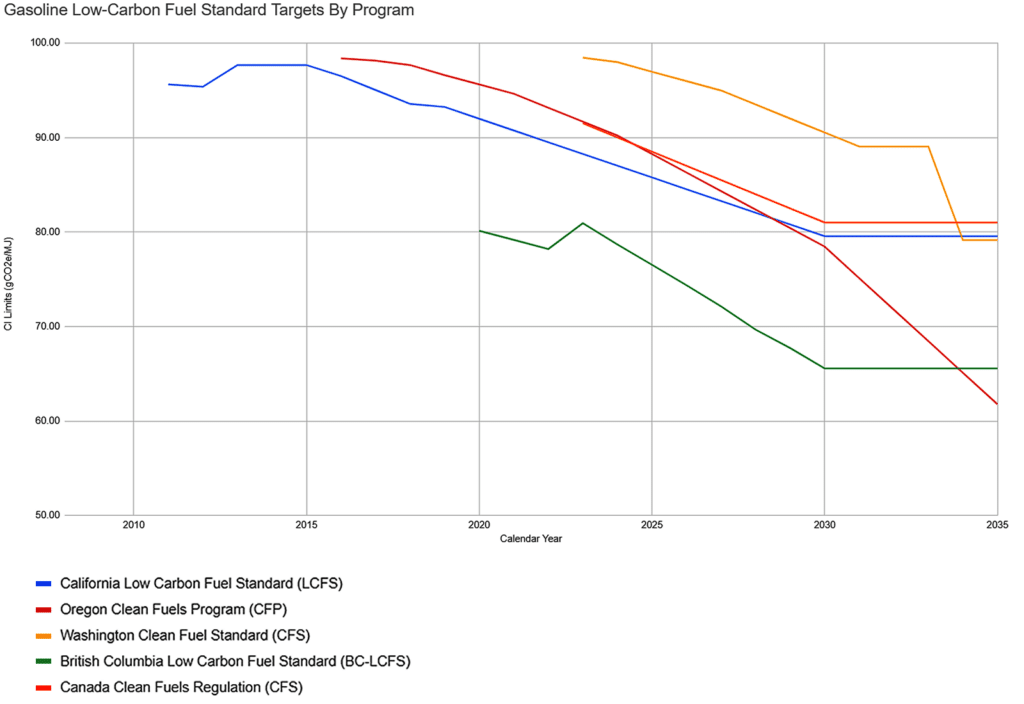
Which States Have Regulations, and Which Are in the Legislative Process?
Current regulations: California, Oregon, Washington, British Columbia, Canada (Nationally).
Pending Regulations: Illinois (Clean Transportation Standard), Minnesota (Clean Fuel Standard), New Mexico (Clean Fuel Standard), New York (Clean Fuel Standard), Pennsylvania (Low Carbon Fuel Standard), Colorado (Clean Fuel Standard), Massachusetts (Clean Fuel Standard), Hawai’i (Clean Energy Initiative), and Ohio (Low Carbon Fuel Standard).
Despite having different names in different jurisdictions, all clean fuel standard programs are designed for the same purpose, have similar objectives, and function in the same way. Clean Fuel Standard programs are designed to decrease the carbon intensity of the jurisdiction’s transportation fuel pool and provide an increasing range of low-carbon and renewable alternatives to consumers of such fuels, which reduce petroleum dependency and achieve air quality benefits.
Clean fuel standard programs rely on the concept of the “carbon intensity” (CI), sometimes known as “well-to-wheel emissions” or “lifecycle emissions,” of gasoline and diesel fuel and their respective substitutes. Carbon intensity refers not to just the emissions associated with combusting the fuel in a vehicle or piece of equipment, but all emissions associated with procuring, refining, and transporting it to the end location, as applicable. For example, the CI of one gallon of gasoline will account for the initial extraction, refining from crude to gasoline, transportation emissions associated with trucking or piping it, and the final burning in a vehicle. Similarly, the electrical grid has an associated CI, accounting for the type of electricity production in any particular grid. Electricity with high mixes of hydropower will have a lower CI than those that combust high quantities of natural gas or use coal to produce electricity.
Low-carbon fuels produced or imported that have a CI below the established benchmarks in the chart above generate credits (such as renewable diesel, renewable natural gas, ethanol, hydrogen, and importantly, electricity), while fuels above the CI benchmark generate deficits (typically just fossil diesel and gasoline). Credits and deficits are denominated in metric tons of carbon-dioxide equivalent (one credit equals one metric ton of CO2e) and credits are transacted on commodity exchanges and in private transactions.
The number of credits or deficits created is dependent on the CI score of the fuel relative to the established standard for that calendar year, and the quantity of fuel produced, imported, or consumed.
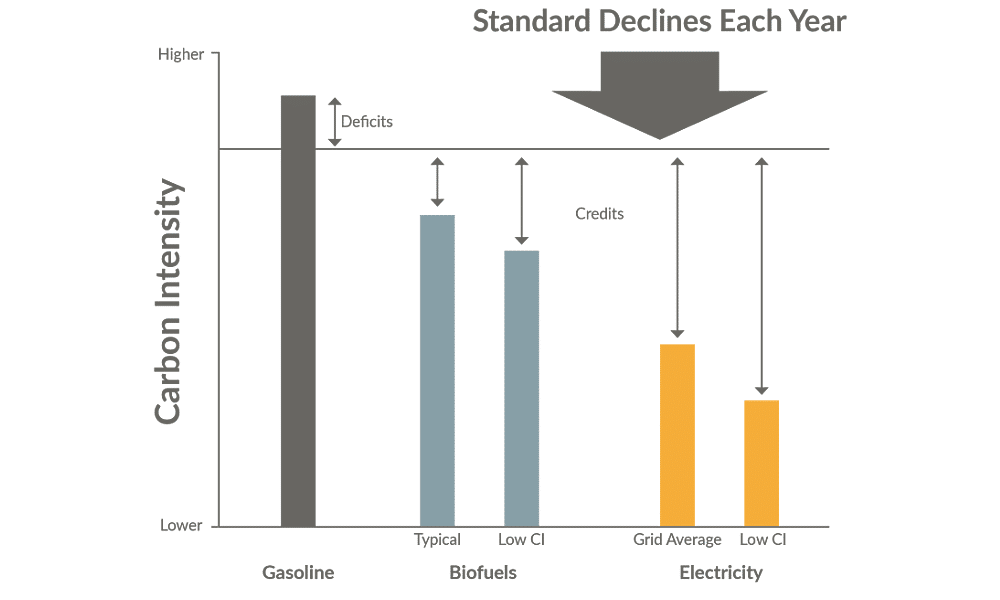
Why Do Clean Fuel Programs Exist?
These programs address environmental, economic, and health concerns related to fossil fuels. Their purposes include:
- Climate Change Mitigation: Clean fuel programs are designed to reduce the carbon footprint associated with transportation fuel consumption, contributing to global efforts to mitigate climate change.
- Local Air Quality Improvement: these programs aim to minimize the release of pollutants from combustion in local communities, such ports, school districts, warehousing districts, and many more, improving local air quality.
- Energy Security and Diversification: Clean fuel programs seek to enhance energy security by encouraging the utilization of domestically produced and renewable energy sources, reducing dependency on imported oil.
- Technological Innovation and Job Creation: Clean fuel programs drive innovation in cleaner fuels and technologies, fostering the development of sustainable energy solutions and creating significant employment opportunities.
- International Commitments: Many jurisdictions have committed to international agreements for mitigating climate change. Clean fuel programs play a crucial role in achieving emission reduction targets, particularly in the transportation sector.
- Consumer Choice and Affordability: Clean fuel programs offer consumers a wider array of fuel options, including electric vehicles, biofuels, and hydrogen, fostering consumer choice and increasing affordability.
Clean fuel programs are integral components of a sustainable energy strategy, aiming to balance environmental, economic, and societal considerations while steering toward a more sustainable and resilient energy future.
How Do Clean Fuel Programs Work?
While each program has its specific requirements, they generally follow these four steps:
- Use “Clean Fuel” Vehicles in Your Fleet: Energy must be consumed before credits can be created. The volume of credits earned will be dependent on 1) where you are consuming that electricity, 2) whether you are buying zero-emission electricity (i.e. from solar or wind farms), 3) how much energy you’re consuming, and 4) what you are charging. Heavier consumers (i.e. Class 8 Trucks) will earn more credits per kWh than lighter consumers (i.e. light-duty vehicles).
- Access Your Energy Consumption Data: We track your fleet and consumption data on your fleet size, makeup, and energy consumption quarterly. If needed, we help facilitate meter installation at your facility.
- Register, Report, and Monetize Your Credits: You, or using a service like e-Mission Control, register corporate and fleet data in all state systems, manage reporting submissions, data confirmations, and all other state agency interactions needed to generate clean fuel program credits. Credits are sold on an open market to oil producers and refiners are required to purchase them. We leverage the best pricing by combining your credits with the rest of our portfolio.
- Incentive Payments are Issued: Payments are often made directly from the counterparty buying your credits and happens every quarter (in the US) or every year (in Canada).
Eligible Equipment: Each program has its list of eligible equipment. For example, many EV chargers are network capable and can meter your kWh usage (see below).

How is my Energy Measured?
Energy measurement in Clean Fuel Programs varies. While some programs require specific metering at the energy dispensation point, others calculate based on operational data. For example, energy dispensed from a charging station for a clean fuel vehicle may be externally metered. Today’s EV chargers, often network-capable, can automatically meter kWh usage. However, if such data is unavailable, external metering might be necessary. It’s important to note that energy consumption data tracked by the vehicle itself is generally not sufficient for these programs.
Where Does the Money Come From?
Funds are sourced from an open market where credit generators sell to regulated entities like oil producers and importers. These are private funds, distinct from public funds, and can be combined with other publicly funded incentives.
Program Timing and Cadence
The operational cadence varies, with US programs often functioning on a quarterly basis and British Columbia’s LCFS and Canada’s CFR on an annual schedule.
Legal Considerations
Understanding service agreements and the terms of grant money is crucial, as these can influence your rights and responsibilities within the program.
How to change an LCFS aggregator?
If you ever want to check the status of your facility, you can reach out to program regulators and inquire if someone is collecting credits on your behalf. If you already have an aggregator, we recommend you ask them these questions to ensure you are optimizing your participation in the program.
How to check service agreements with equipment providers and/or network operators?
Some entities have built your Clean Fuel Program credit management/ownership into their contracts with other provided services. It is important to ask the relevant questions when signing such agreements, as some contracts can specify that they can collect credits on your behalf.
How to check the terms of grant money?
Similar to the scenario above, some grant or assistance programs do require you sign away your credit generation rights in order to receive the funds. An example of this could be a utility-based program that assists with paying for installation of charging infrastructure on your site. However, in exchange for that money, you may need to sign away your credit rights.
By participating in Clean Fuel Programs, entities not only contribute to environmental sustainability but also enjoy economic and societal benefits, driving us towards a greener, more resilient future. To learn more about how you can benefit from Clean Fuel Programs in your state, reach out to e-Mission Control. To understand how to power your EV fleet with ZERO capital, operational, or performance risk, get in touch with Electrada.
